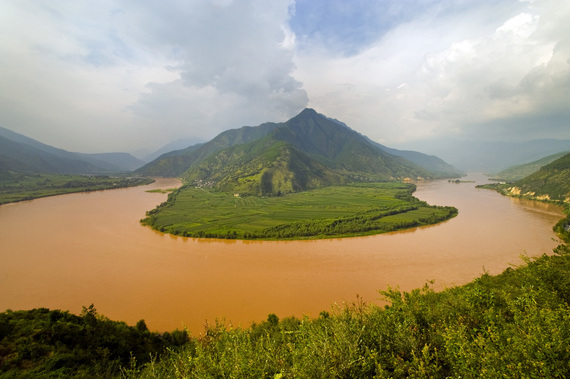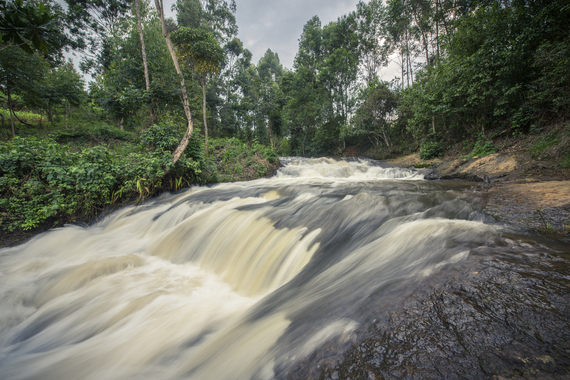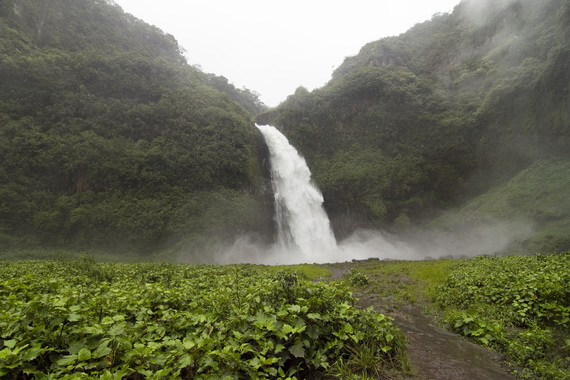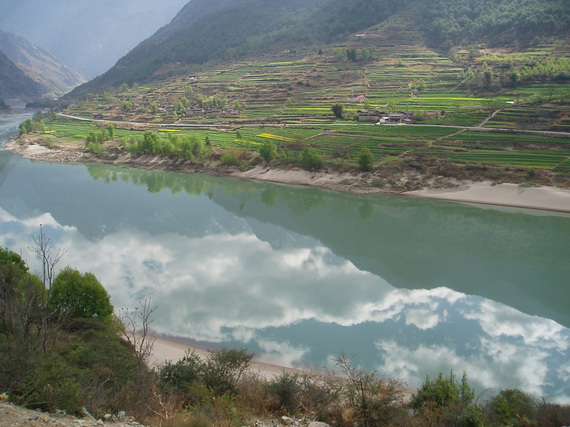
Runoff during heavy rains turns the Yangtze River brown. But investing in nature could reduce pollution in China's waterways. © Ami Vitale
Mark Tercek is President and CEO of the Nature Conservancy and author of Nature's Fortune. Follow Mark on Twitter: @MarkTercek.
Air quality is often top of mind in conversations about China's pollution challenges.
But as I met with the Nature Conservancy's (TNC) volunteer leaders recently in China, water pollution was another big topic of discussion.
One-third of China's lakes and rivers are already so polluted they're not fit for human consumption, and the problem could worsen as the country's rapid urbanization continues.
To assess the role nature-based solutions could play in combatting pollution from agriculture and other land development activities, our scientists analyzed the 135 surface water sources that serve China's 30 largest and fastest-growing cities. We recently published our findings in a report called the China Urban Water Blueprint.
TNC's study found that implementing conservation projects in certain water supply areas - over a combined total of 1.4 million hectares, about the size of Connecticut - could reduce water pollution by at least 10%.
That alone could improve water quality for more than 150 million Chinese citizens.

A new water fund that finances conservation projects in Nairobi
will protect water supplies for 9 million people. © Nick Hall
Water Funds
The research TNC conducted in China has already led to several specific projects to explore innovative ways to finance conservation. We are now compiling data in three different locations to see whether changes in land management could cost-effectively protect water supplies.
One possible financial tool - which we call a "water fund" - creates a system in which downstream users of water pay to implement upstream conservation projects in order to improve water quality.
For instance, water users could pay to restore and protect upstream forests - which filter water - to help clean up pollution before it reaches China's waterways. Or, water users could pay farmers to plant cover crops during non-growing seasons to improve soil health - reducing the need for fertilizer - and hold the soil in place to prevent erosion.

TNC created its first water fund in Quito, Ecuador, in 2000. Since then,
we've created 24 water funds in nine countries. © Erika Nortemann
Often, upstream conservation strategies cost less than building water treatment facilities, so investing in nature through water funds can help governments save money.
Water funds also provide clear road maps showing which investments are needed and where. And they can accelerate stakeholders' adoption of needed changes.
For example, for our Longwu Water Fund project near Hangzhou in China, we're assessing how to best work with businesses to transform agricultural practices and protect land that plays a critical role in keeping reservoirs clean. TNC's China team - in collaboration with local business leaders - has proposed switching certain areas to organic crop production to reduce fertilizer runoff and creating community incentives that more broadly support a green economy.

Implementing sustainable agriculture practices at farms like these along China's
Yangtze River can reduce polluted runoff. © Brian Richter
Scaling Up
Our China colleagues are also partnering with university research teams and government agencies to help them use cutting-edge science to inform decision-making. We've learned that having the right data and fact base allows for a comprehensive comparison of manmade infrastructure and natural alternatives. This could go a long way toward expanding the use of nature-based solutions.
TNC got started in this area with its first water fund in Quito, Ecuador, in 2000. Since then, we've created 24 water funds in nine countries, allowing us to tap into a new source of funding for conservation.
It's encouraging to see our team in China replicating and scaling up conservation strategies we've successfully implemented elsewhere in the world.

